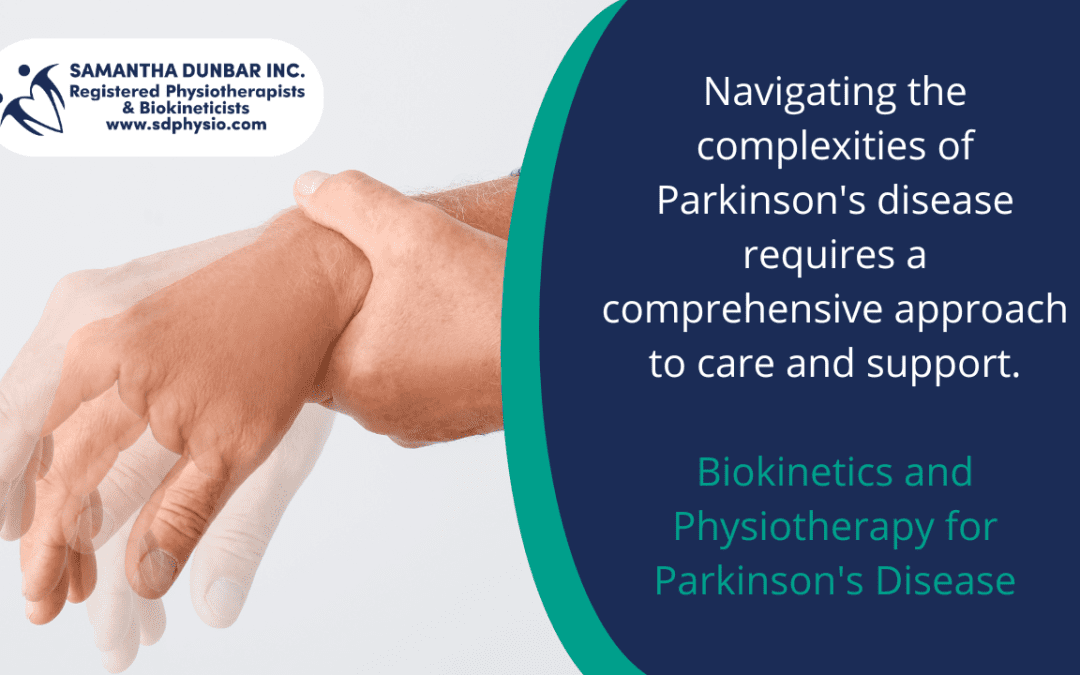Parkinson’s disease is a progressive neurodegenerative disorder that affects movement, balance, and coordination. It primarily impacts dopamine-producing neurons in the brain, leading to a deficiency of dopamine, a neurotransmitter responsible for smooth, coordinated muscle movements. Consequently, individuals with Parkinson’s often experience tremors, rigidity, akinesia (delayed movement response), and postural instability, significantly affecting their daily activities. While there is currently no cure for Parkinson’s, various treatment approaches aim to manage its symptoms and improve the quality of life for patients.
How Can Biokinetics Help?
Biokineticists specialize in designing personalized exercise programs for individuals with Parkinson’s, targeting key areas such as balance, gait, flexibility, and strength. These exercises address the unique needs and challenges faced by each patient, aiming to improve mobility, posture, and overall physical function.
Gait Disturbances
One of the main symptoms of Parkinson’s is gait disturbances, including shuffling steps, freezing of gait, and difficulty with turning. Biokineticists use various techniques such as:
- Cueing Strategies: External cues to initiate movement.
- Rhythmic Auditory Stimulation: Using rhythm to enhance movement.
- Visual Feedback: Mirrors or video to improve awareness of movement patterns.
These techniques help improve gait pattern, stride length, and walking endurance.
Postural Instability
For postural instability, interventions focus on:
- Balance Training Exercises: To enhance stability.
- Proprioceptive Re-education: Improving the sense of body position.
- Vestibular Rehabilitation: Exercises to improve inner ear function related to balance.
A common trait developed in individuals with Parkinson’s is a “stooped posture,” which involves excessive forward leaning and an inability to stand up straight correctly. This can also affect walking patterns and increase the risk of falling. Regular stretching helps with overall rigidity, while strength and balance exercises aid in postural correction.
Biokinetic sessions also provide repetitive practice of specific movements and tasks, helping individuals with Parkinson’s enhance neural connections, improve motor control, and mitigate the effects of dopamine depletion on movement execution. This can be further progressed by incorporating dual-task training, where motor performance is trained alongside cognitive activities. Multidisciplinary treatment helps improve overall quality of life and movement.
What to Expect from Physiotherapy for Parkinson’s?
Physiotherapy complements biokinetic training by providing manual treatment tailored to Parkinson’s symptoms. Physiotherapists focus on:
- Decreasing Rigidity: Through myofascial and soft tissue release, needling, and shockwave therapy.
- Improving Postural Stability: By reducing overactive concentric muscle contractions.
Regular physiotherapy sessions help decrease muscle rigidity and postural instability, contributing to improved movement and reduced risk of falls.
Conclusion
Both physiotherapy and biokinetics play crucial roles in assisting individuals with Parkinson’s disease. These modalities work together to improve and maintain function and quality of life, addressing symptoms through tailored exercise and manual therapies. By focusing on personalized treatment plans, individuals with Parkinson’s can experience enhanced mobility, better posture, and greater overall physical function.













